Global Systems
Global Circulation Patterns
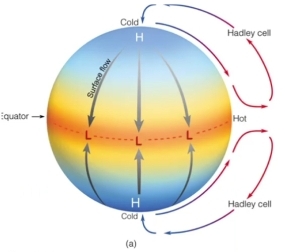
First idea
Solar energy drives the winds
Problems : Doesn’t account for rotation & in this model the whole earth is an ocean without a continentals
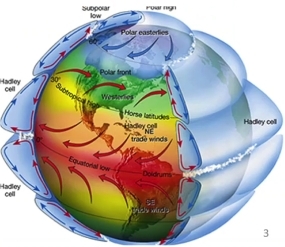
Hadley Cell Equator & 30 N-S
Ferrell Cell 30 N-S & 60 N-S
Polar Cell 60 N-S & 90 N-S
Three Cell Model
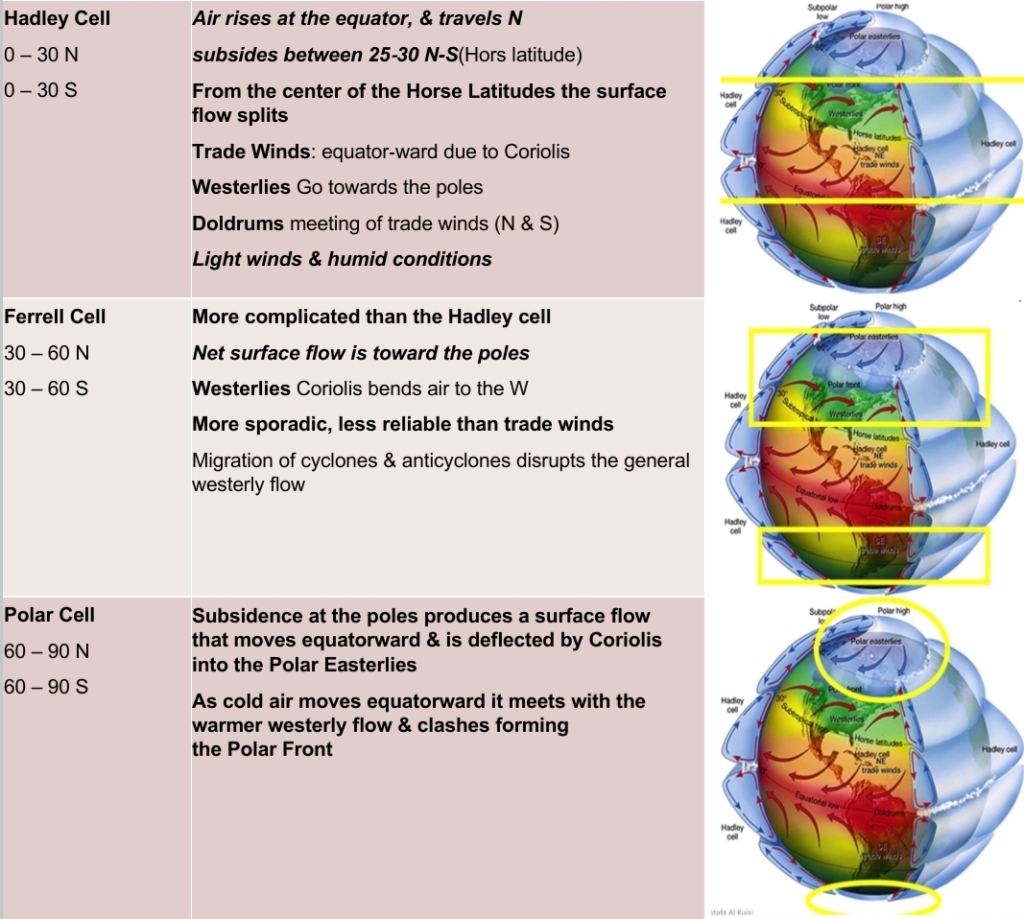
Horse Latitudes
The Horse Latitudes are 25‐30 N-S
Trade winds weaken in this region, & would stall early Spanish ships sailing to NewWorld
When particular areas were too calm, they were forced to toss over their frightened horses into the sea, or eat them
The legend is the horses would swim after them for miles before they drowned, & the superstitious sailors would hear the horse screams in their haunted dreams for the rest of the voyage
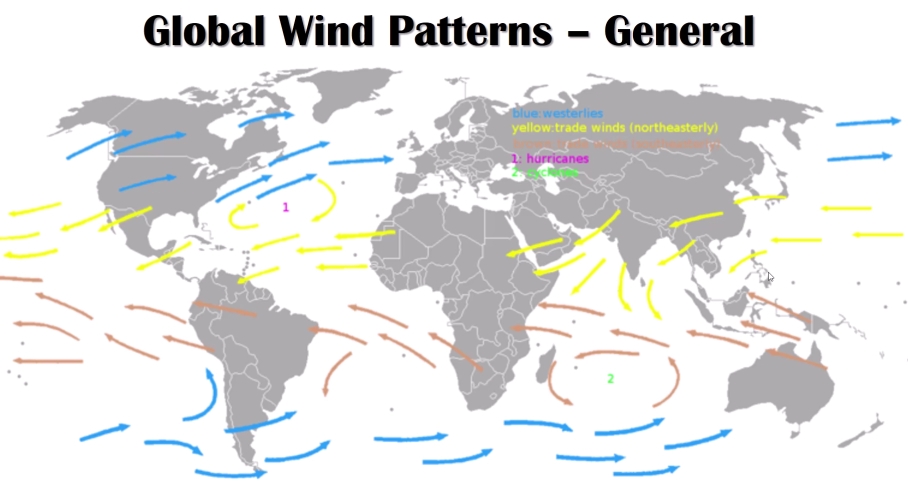
Westerlies
Occur between 30‐60 N (S) Latitude
Blowing from the high P area in horse latitudes towards the poles
Steer extratropical cyclones
Can redirect Tropical Storms
The Westerlies are:
1. strongest in winter hemisphere & times, when the P is lower over the poles
2. weakest in the summer hemisphere, when P are higher over the poles
The strongest westerly winds in the middle latitudes can come in the Roaring Forties, between 40° & 50° latitude S
Roaring Forties (& Furious Fifties)
The strong west‐to‐east air currents are caused by the combination of air being displaced from the Equator to S Pole & the Earth’s rotation, & there are few landmasses toserve as windbreaks
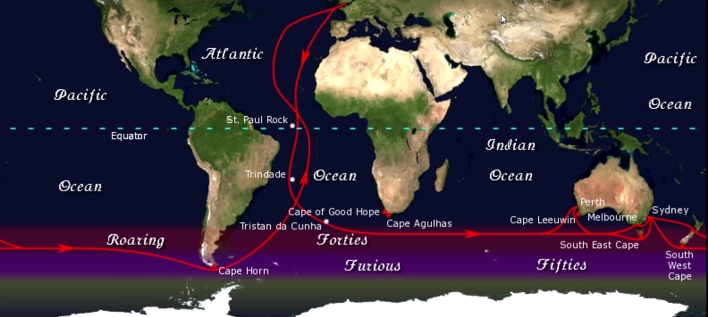
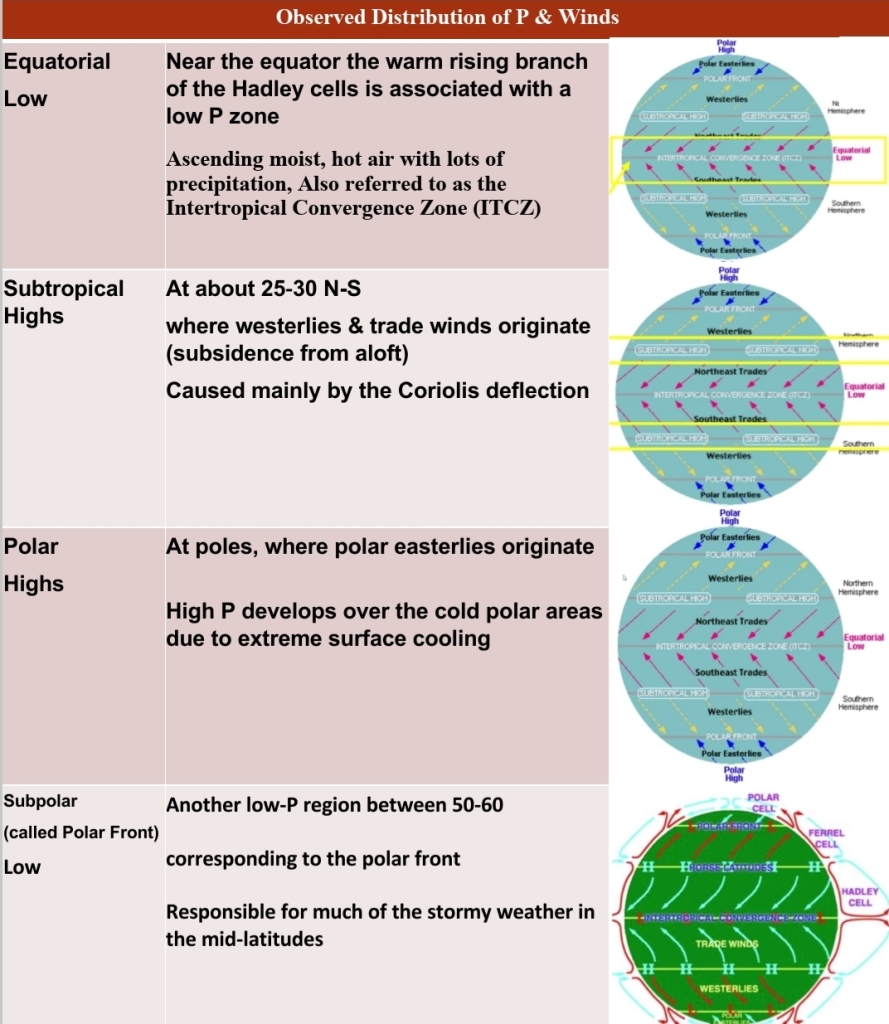
Jet Streams
Region of the upper atmosphere where a narrow band of airmoving REALLY fast
Location of jet stream influences local weather
LARGE T contrasts

Polar Jet Stream (Mid‐Latitude)
Where the Polar Frontis located: Where the cold polar easterlies interact with the warm westerlies
It’s Geostrophic Wind if it’s high up in atm
Meanders west to east
Can exceed 500 km/hour
In winter it travels at 75 km/h
In summer 65 km/h
Subtropical Jet Stream
Semi‐permanent jet that exists over the subtropics
Is mainly a wintertime phenomenon
Due to the weak summertime T gradient, the subtropical jet is relatively weak during the summer
Slower than the polar jet
Still travels west to east
Usually at about 25 N
Usually at an altitude of about 13 km

Global Winds & Ocean Currents
Winds are the driving force for ocean currents
A relationship exists between ocean & atmosphere circulation
Ocean currents move more slowly than prevailing winds
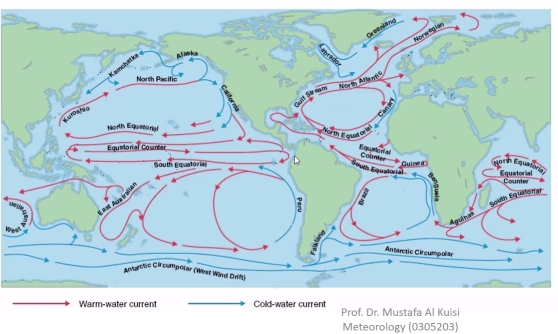
Pacific Trash Vortex
Trash gets “Stuck” in the N Pacific Gyre
Floating mass of trash
Mostly Plastic that is non‐biodegradable
Rubber duckies got free & went all over the world following ocean currents


El Niño & La Niña
El Niño Southern Oscillation
Ocean phenomenon that occurs in the Equatorial Pacific
As the southeast trade winds decrease in strength (weaken) the warm water can make it farther across the Pacific to wards S American
Named because it starts during Christmas
Usually happens every 3‐7 years
P changes & reversals in the Pacific trigger the change in winds
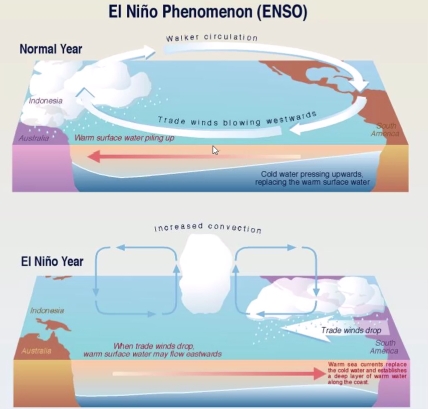
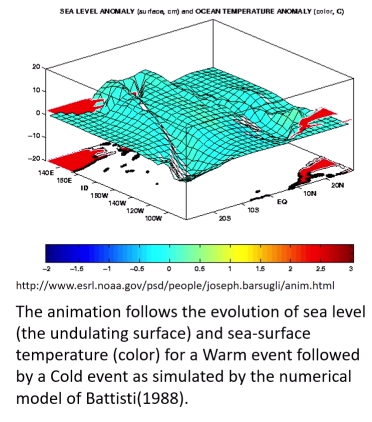
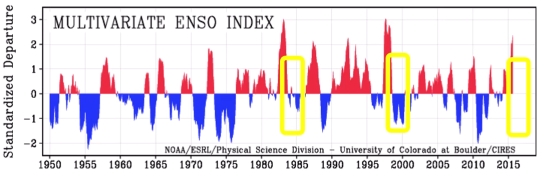

The opposite of an El Niño
When T colder than average T in the Pacific
The End
